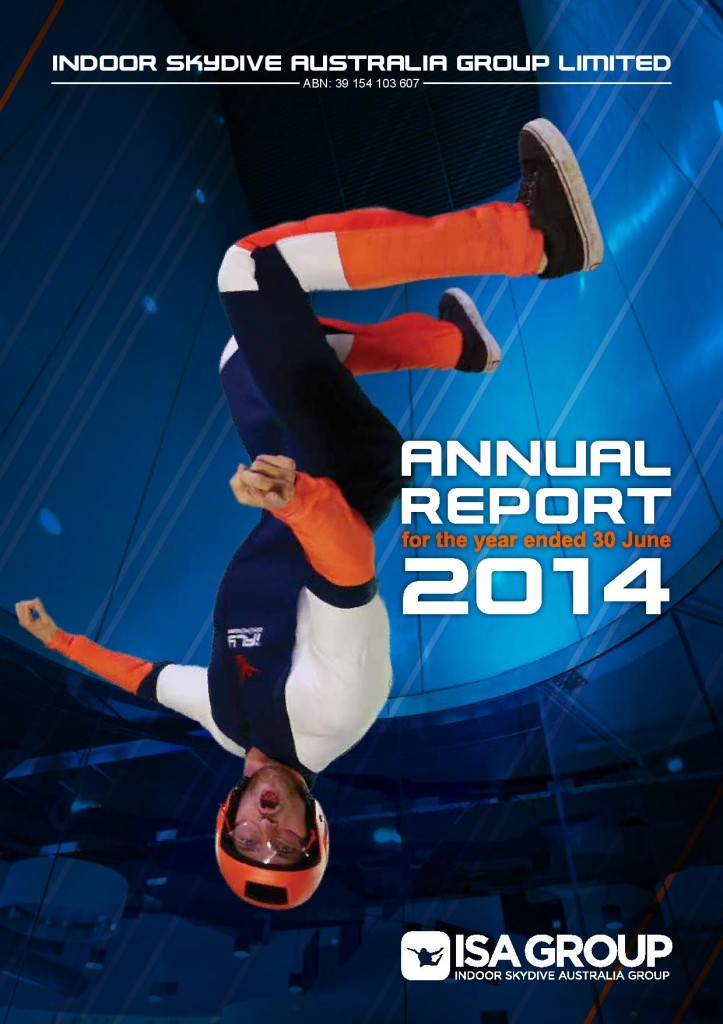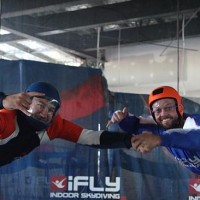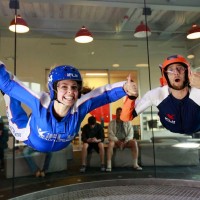Written by Anthony Klan
FORMER Australian Special Air Services Regiment soldiers Danny Hogan and Wayne Jones came up with the idea to create the nation’s only indoor skydiving facility or wind tunnel about seven years ago, but a US training mission in 2010 got them over the line.
There were about 35 modern indoor skydive facilities globally, that number rapidly increasing in line with the popularity of extreme sports, and Australia had nothing to offer.
“In the US they (wind tunnels) were being used first-hand by the military and our defence forces were using them in different countries as a training tool,” Hogan says.
He discussed it with Jones — the pair had long been friends, both having served in the same squadrons “in every major conflict Australia has been involved in recent years” — and Indoor Skydive Australia was born, floating in January last year, after raising $12 million.
The group, which operates under iFLY branding associated with similar facilities in the US, will open its first centre, iFLY Downunder, in Penrith, western Sydney, next month.
The company plans to “rapidly” expand the model, opening centres on the Gold Coast, Melbourne, Adelaide and Perth.
Hogan says a key component has been engaging Australia’s aviation skydiving industry, which the pair see as working in concert with the indoor centres, providing specialist ground training and opening up the industry to a far wider audience.
“There are some quite significant synergies between the two industries, some people may see them as competitive but they are nothing but complimentary,” Hogan says. “We are holding sessions with some of the largest drop zone operators, which will work with our expansion.”
And so far — from a market perspective — their calls have been spot-on.
The company was the top performing float last year, according to Deloitte, with the 60 million shares it issued at 20c in January rocketing to 55c by December — a 175 per cent increase. (It was followed by Freelancer, up 156 per cent, and Brisbane-based phosphate explorer Fertoz, up 130 per cent).
This week the shares were trading at 80c, up fourfold on the listing price. “Investors, and those who have been with us from the beginning, are starting to see what we are doing and delivering on our original message,” Hogan says.
The “flight chamber” is 13 metres high, five metres in diameter and allows up to eight experienced people to fly at one time.
It is powered by four 450hp fans in the ceiling of the chamber, which draws the air up, creating lift for the user.
Hogan says the air is then recirculated, entering the tunnel again from the bottom — from below a net — having passed through two 600 kilowatt chilling units that control air temperature.
While the facility is open to anyone — beginners to experts aged “three to 103” — it is the most advanced flight chamber available and can meet the demands of the most advanced skydivers.
“The winds can exceed 250km an hour, which is where the skydiving market is going,” Hogan says.
He says the high speed is required to enable VFS, or vertical formation skydiving, which involves the skydiver flying head or feet down and so providing less surface area and overall lift at a given air speed. “Gone are the old belly down skydivers. Vertical formation is what it’s about at the moment,” he says.
But for Aviation — this journalist tested the facility this week — it was all about the belly-down action. (I tell myself it’s retro.) Frazer Smith, an international skydiving champion brought to Australia from Britain especially to train users at the facility, says it’s belly-first only for first-timers. I have precisely no problem with this.
After flailing around for a few minutes like a sea cucumber at the bottom of giant fish tank, I’m taking off and it feels exactly like that recurring dream you have where you can fly.
It feels exactly like floating; which, to be fair, is precisely what it is.
And another bonus is, it’s a great workout.
(I know this because one; Smith tells us before we start, and two, I wake up the next day feeling like I’ve been trying to tow a truck. But unlike any workout I’ve ever experienced I’d spent the entire time grinning like a manic chipmunk in a Nobby’s Nuts factory.)
David O’Hare, a friend I’ve dragged along to check out the facility, on account of his previous experience with skydiving — and because he tells me he’s been checking the progress of the facility online for months — finishes his dive similarly buzzed.
He wraps up the experience perfectly, smiling and shaking his head.
“This is awesome. Damn I’m going to spend a fortune!”
See the video and original article here


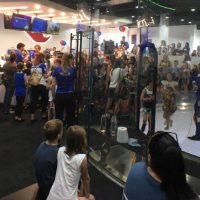


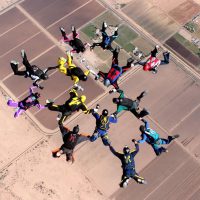



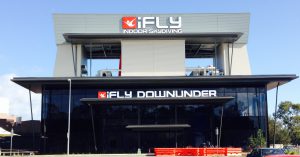 Celebrating 3 years worth of accomplishments!
Celebrating 3 years worth of accomplishments!




 Indoor Skydive Australia Group Limited has just signed a Memorandum of Understanding for the development of it’s first indoor skydiving facility in Malaysia. The facility is at the 1 Utama Shopping Centre, one of the largest shopping centres in the world.
Indoor Skydive Australia Group Limited has just signed a Memorandum of Understanding for the development of it’s first indoor skydiving facility in Malaysia. The facility is at the 1 Utama Shopping Centre, one of the largest shopping centres in the world.